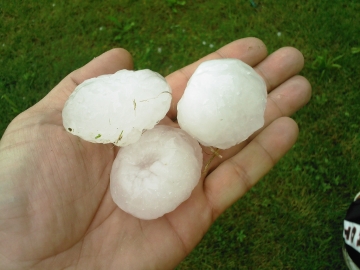740124_Hail No!_360 px width.jpg

Large hailstones were produced in Spain during a marine heatwave in August of 2022. Credit: Kevain25460, CC BY-SA 3.0
A massive hailstorm blasted northeastern Spain a couple of years ago. It lasted only 10 minutes or so. But it produced the largest hailstones ever recorded in the country—the size of softballs. It might have been kicked up a couple of notches by another type of “weather” event—a marine heatwave.
The storm roared to life on August 30th, 2022. It caused major damage to roofs, cars, and crops. It injured 67 people, and killed a toddler, who was hit in the head by one of the giant hailstones.
A recent study blamed the intensity of the storm on global climate change. Scientists simulated climate conditions under different levels of air and ocean warming.
The storm took place during a marine heatwave in the western Mediterranean Sea. The surface water temperature topped 85 degrees Fahrenheit—five degrees higher than normal. That produced more evaporation, which fed extra moisture into the air. It also heated the air, providing the energy to build storm clouds. As hailstones developed, strong updrafts pushed them back up, so they just kept getting bigger and bigger. Finally, they became heavy enough to plunge to the ground—causing chaos.
The study said the hailstorm itself could have happened without today’s higher temperatures. But it would not have been as intense or as destructive.
Major hailstorms have been getting more common across Spain and the rest of Europe. And the study says that trend should continue—powered by our warming climate.

